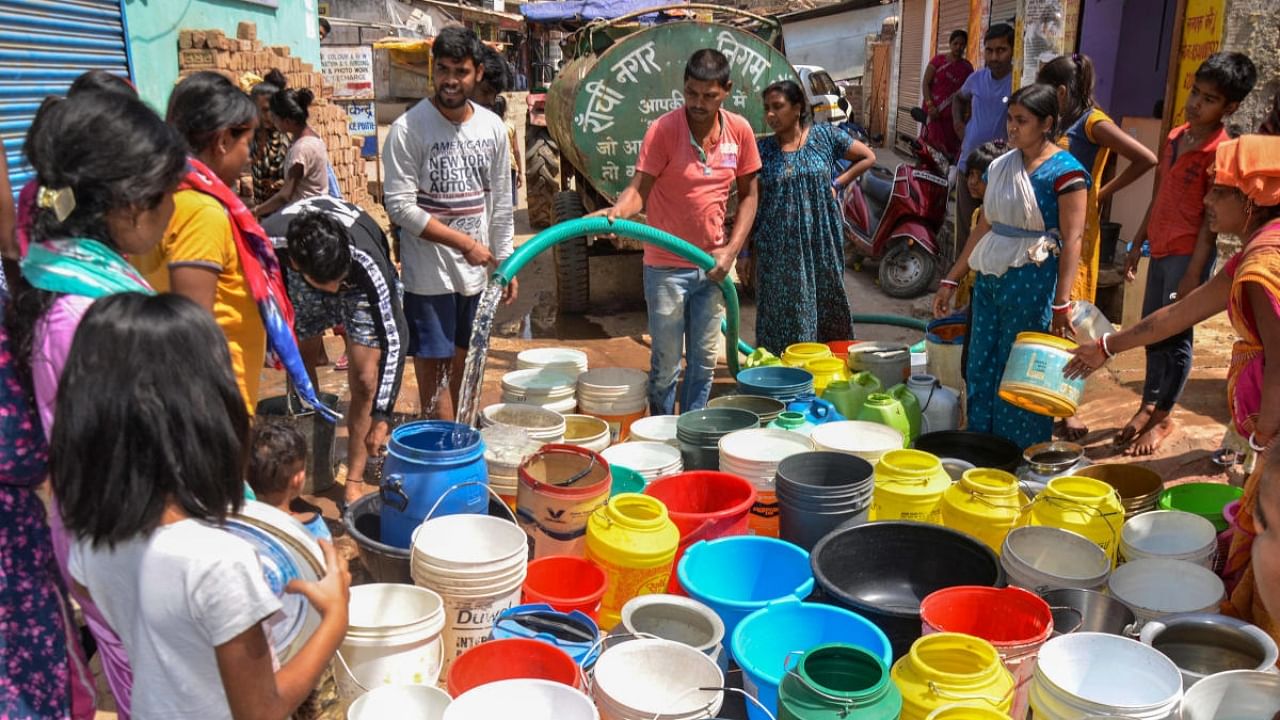
Eight per cent of the rural households in the country receive water only once a week, while about 74 per cent of them receive it all seven days, according to a new government study.
The national study conducted by the Jal Shakti ministry released on Sunday has revealed that about four per cent of households receive water for 5-6 days in a week and 14 per cent receive at least 3-4 days in a week.
“Close to three-fourths of the HHs (74 per cent) received water all 7 days a week. Out of the remaining 26 per cent, 4 per cent received water for 5-6 days in a week, 14 per cent received at least 3-4 days in a week, and the balance 8 per cent received water only once a week,” the study said.
The average duration per day supply has been found to be three hours.
Four out of five (80 per cent) households reported that their daily requirements of water are being met by the household tap connections, the study claimed.
Among the households without working tap connections, eight states, including, Jharkhand, Chhattisgarh, and Uttar Pradesh had a higher proportion of households where tap water was not available.
At least six states had 30 per cent households which had not had tap water in last seven days.
Under the ‘Har Ghar Jal’ villages, 91 per cent of the households were found to have a working tap connection on the day of the survey, which is relatively higher than the overall national proportion (86 per cent).
Of these, 88 per cent received adequate quantity (>55 litres per person per day of water), 84 per cent received a regular supply, and 90 per cent received potable water through household tap connections.
Among the aspirational districts covered in this assessment, 78 per cent of the households were found to have a working tap connection on the day of the survey, which is relatively lower than the overall national proportion (86 per cent).
Of these, 85 per cent received adequate quantity (>55 LPCD of water), 77 per cent received a fully regular supply, and 88 per cent received potable water through household tap connections.
Overall, 62 per cent of the households were found to have a fully functional tap connection, it said.
For the study, a total of 13,299 villages were surveyed, of which 11 per cent were SC-dominated villages and 23 per cent were dominated by the STs.
Functionality of household tap connections is defined under JJM as household taps having infrastructure for providing water in adequate quantity (at least 55 LPCD), of prescribed quality on a regular basis.
Out of the 3,01,389 households sampled for the assessment, water was not available in 42,238 households on the day of the survey.
The on-site testing and lab test results of the water indicates that more than 4 out of 5 households (87 per cent) of the sampled households in the state received potable water.
Punjab, Tripura, Bihar, Goa, Kerala, West Bengal, Arunachal Pradesh, and Puducherry were found to provide more than 55 LPCD of water in more than 95 per cent households.
More than 90 per cent households in Goa, Meghalaya, TN, Telangana, Tripura, and Puducherry reported to regularly receive water through house taps.
Only Manipur was found to have less than 60 per cent households with regular supply, the study said.
Potability of water was found to be more than 90 per cent in Dadra and Nagar Haveli, Daman and Diu, Himachal Pradesh, Tamil Nadu, Ladakh, and Madhya Pradesh. Whereas in Tripura, Kerala, and Sikkim the potability of water was found less than 60 per cent.
Nationally, 59 per cent households reported that they receive water at least once a day from piped water supply, with average duration of three hours in a day.
Maharashtra, Karnataka, Andaman and Nicobar Islands Islands, and Mizoram had over 90 per cent households that receive water at least once a day, study said.
Puducherry, Tripura, Bihar, West Bengal, Telangana, and Punjab reported to receive water at least once a day per week in more than 90 per cent households.
Overall, 89 per cent anganwadi centres were found to have potable water supply.
Sikkim, Ladakh, Dadra and Nagar Haveli and Daman and Diu and Andaman and Nicobar Islands reported receiving potable water in 100 per cent of anganwadi centres, while Tripura and Kerala received potable water supply in 80 per cent of such centres.
In most anganwadi and schools, traces of residual chlorine were found to be higher than the permissible range, indicating inappropriate localised dosing of chlorine for purification, which could be hazardous.
Chlorine within permissible limits is an indicator of a well-maintained and healthy piped water supply system.
More than 90 per cent of the village-level institutions were found to receive potable water in the study.
More than half (57 per cent) of the sampled households reported purifying water before drinking. Purifying methods ranged from boiling, stand and settle, and strain using a cloth to use of alum, treatment with chemicals, water filters, and RO treatment.
No more than 3 per cent of the households reported using RO treatment for water purification prior to drinking, the report said.
Water samples from 2,59,151 households and 16,148 public institutions were collected and sent to the district-level NABL accredited laboratories for testing of water quality.
Overall only 83 per cent of the submitted samples could be analysed for purity.
Overall 93 per cent of the water samples were found to be free of bacteriological contamination.
Twenty-four per cent of these samples were found to be containing permissible traces of residual chlorine, which could be a matter of concern.